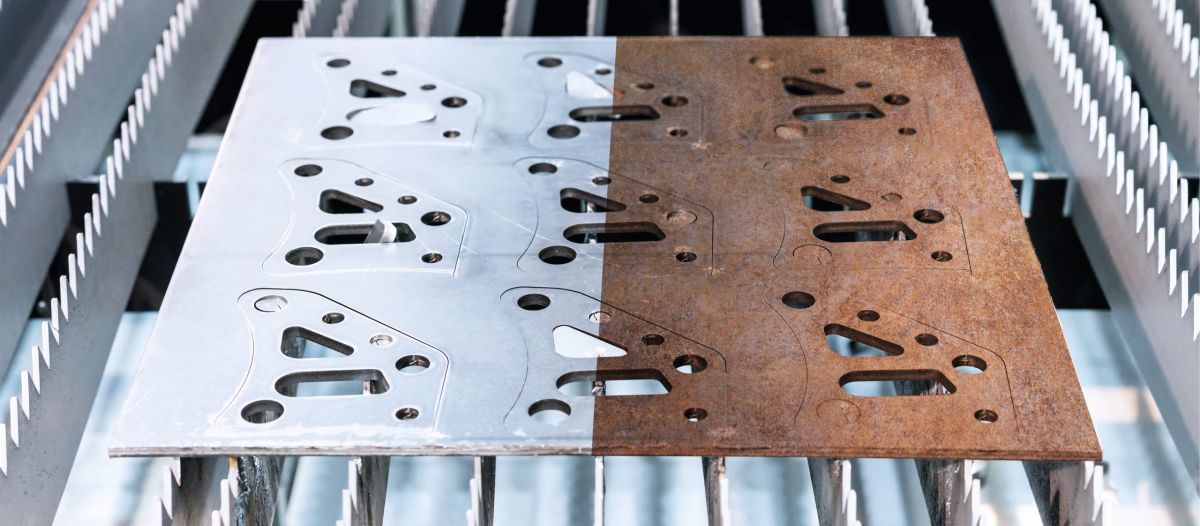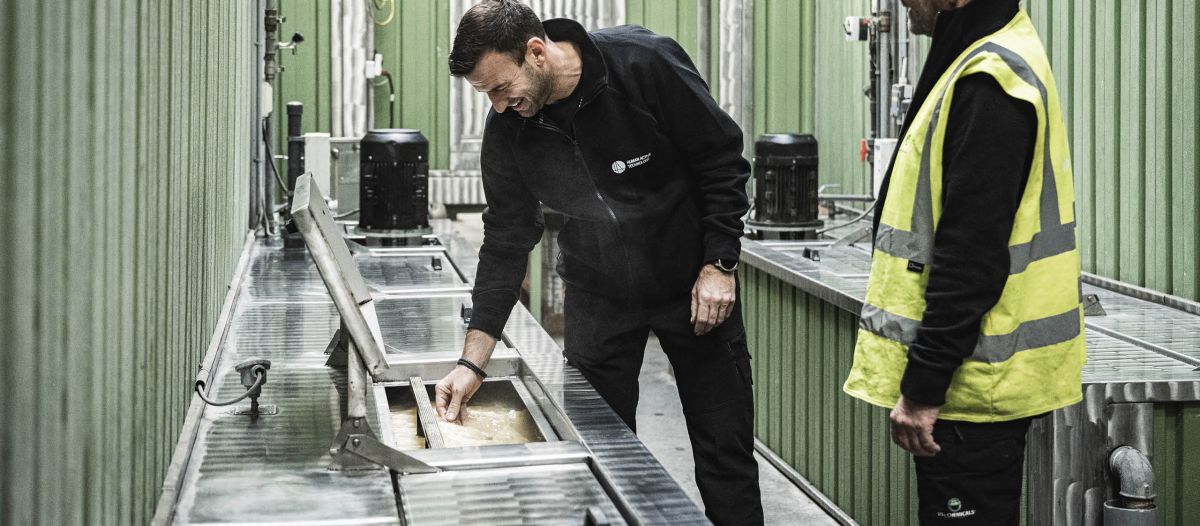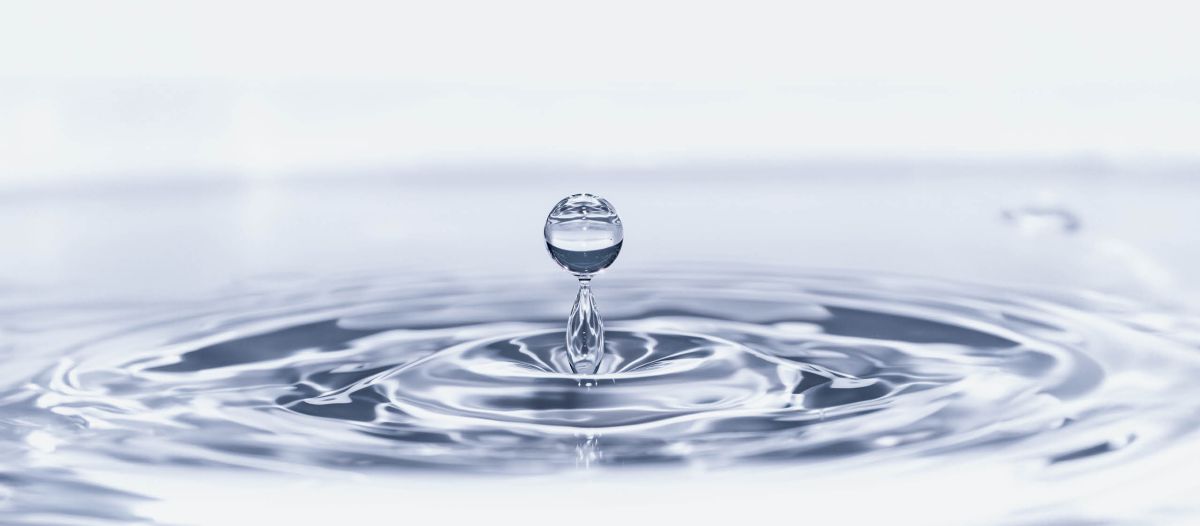Learn how water qualities like hardness and chlorides affect industrial parts cleaning. In this blogpost we will also talk about how to prevent corrosion, extend bath life, and lower total cost of ownership with process control.
Table of Contents
Your water quality is key. Because rust never sleeps.
Water quality plays a major role in industrial cleaning. Even when your chemistry, temperature, and mechanics are set correctly, the wrong water can undo your hard work: hardness (calcium and magnesium), chlorides, and dissolved salts all influence bath stability, deposit formation, spotting, and – most critically – corrosion risk after cleaning.
This guide explores how water quality influences the cleaning process, what warning signs to look out for, and how to keep rust from creeping back into your production line. Water isn’t just the carrier for your cleaning chemistry – it directly affects how that chemistry performs, how stable your bath remains, and how well your cleaned parts resist corrosion.
If you want to understand specific protection technologies in more detail, explore our knowledge posts on:
Understanding parts cleaning and corrosion risk
Once parts are cleaned, their surfaces are highly ‘active’. If rinse water is hard, high in chlorides, or otherwise poorly controlled, corrosion can begin immediately – long before parts reach coating or assembly.
Key considerations:
Short-term vs long-term protection: Temporary, water-based products suit internal handling and pre-paint processes; oil-based products offer extended protection during storage or transport with changing temperature/humidity.
Passivating substances: Amines, amine salts of organic acids, and benzotriazole (for copper/brass) form protective films that limit oxygen reaching the metal surface.
Match metal and product: Steel, cast iron, aluminium, copper, and brass demand different conductivity and pH ranges. Softer metals often need low-conductivity products to avoid discolouration.
Why water quality matters in industrial cleaning?
Even when your chemistry and mechanics are perfectly optimised, water quality can make or break your cleaning results. Hardness, chloride levels, and temperature all influence how stable your bath is – and how well your cleaned parts stay protected afterwards.
In the context of the Sinner’s Circle, water has a direct impact on all four parameters: chemistry, temperature, time, and mechanics. If the water is too hard, rich in chlorides, or poorly controlled, it disrupts this balance. The chemistry becomes less effective, surfaces are harder to wet, and both bath stability and corrosion protection start to decline.
Hardness (calcium & magnesium)
Hard water promotes scale formation, nozzle fouling, and run-off marks. Over time, these minerals can build up and reduce both the cleaning efficiency and the lifetime of your bath. The trick is finding the right balance — too soft, and conductivity may fall; too hard, and you’ll be fighting deposits.
Chlorides and dissolved salts
Chlorides concentrate as water evaporates and can trigger pitting corrosion even at low levels. Dissolved salts also increase conductivity, which can change how your chemistry behaves in the bath. Keeping these levels under control is key to a consistent process – but it requires monitoring and a bit of fine-tuning.
Temperature effects
Higher temperature often speeds up cleaning, but it also drives evaporation and chemical breakdown. When water disappears, salts and hardness concentrate faster, pushing the bath towards instability. Sometimes, running cooler is not only more energy-efficient – it can actually make your chemistry more predictable.
How to spot trouble early
Frequent bath changes, visible spots after drying, or higher conductivity readings are clear warning signs. But there are also smaller clues — a slow rise in turbidity, more residue in filters, or a subtle change in foam behaviour. They all point to water that’s doing more harm than good.
Managing water quality isn’t a one-size-fits-all task. It depends on your local supply, materials, and process setup. Understanding how these factors interact is the first step toward keeping corrosion out of the picture – and getting the most out of your chemistry.

What is corrosion – and how does water accelerate it?
Corrosion is an electrochemical process where metal dissolves in humid, oxygen-rich conditions. Poor water quality accelerates this by introducing salts and minerals that attack the surface or destabilise protective layers.
Common types include:
-
Pitting corrosion, often linked to chloride contamination
-
Crevice corrosion, occurring under deposits or gaskets
-
Galvanic corrosion, between dissimilar metals in contact
-
Stress and hydrogen-induced corrosion, found in high-strength alloys
Poor rinse or wash water can be the silent trigger behind all of these – leaving invisible residues that become corrosion initiation points.
Regular monitoring and preventive maintenance are therefore essential to keep corrosion under control. Routine checks of water hardness, conductivity, and pH provide valuable insight into bath stability. Still, when corrosion issues occur or process conditions change, bringing in external experts can be a smart way to stay ahead. It allows your in-house team to focus on production, while specialists ensure your cleaning system runs as efficiently and predictably as possible.
What commonly triggers corrosion in the cleaning line?
Corrosion doesn’t just appear out of nowhere – it’s usually the result of small process imbalances that build up over time.
- Incorrect concentration – Both underdosing and overdosing can disturb the protection equilibrium. Too weak, and surfaces remain exposed; too strong, and residues form that attract moisture.
- High chloride content – As water evaporates, chlorides concentrate, especially in heated washers. These ions penetrate protective films and initiate localised corrosion.
- Inadequate drying – Moisture trapped in threads, cavities, or between stacked parts quickly turns into a corrosion hotspot.
- High ambient humidity – Even good rust protection can “sweat off” when stored in damp conditions.
- Pre-existing corrosion – Once dirt or oils are removed, hidden rust patches become visible. Unless treated, these spots will spread quickly.
- Improper handling – Touching freshly cleaned parts with bare hands transfers salts and acids from skin.
- Equipment condition – Worn seals, poor filtration, and old rinse tanks reintroduce contaminants into otherwise clean stages.
Regular monitoring, proper drying, and attention to maintenance are the foundation for keeping these risks in check. When corrosion starts showing up, it’s rarely one big failure – it’s a combination of small details that no longer align. Reviewing those details with an expert often reveals quick wins in both cost and performance.
Bonus tip
Good cleaning doesn’t just prevent corrosion – it also improves what comes next. When using the correct cleaner, metal surfaces can be prepared for painting without a phosphate coating. This saves energy, simplifies the production process, and significantly improves the work environment.

FAQs Industrial cleaning solutions
How does water hardness affect cleaning?
Hardness ties up surfactants, reduces detergency, and causes spotting. Treating or softening process water helps stabilise the bath and extends its life.
Why are chlorides a problem?
Chlorides attack passive films and drive pitting corrosion. Because they build up gradually through evaporation, regular top-ups and monitoring are essential.
Can rinse water alone cause corrosion?
Yes. Even if washing is perfect, poor-quality rinse water can leave residues that attract moisture and trigger corrosion later.
What’s the best way to monitor bath health?
Track pH and conductivity regularly and inspect for deposits or residue. Consistent records help detect early changes in water balance before they affect cleaning results.
How do I reduce corrosion without raising costs?
Work on balance rather than intensity. Low-temperature chemistry, correct dosing, and stable water quality deliver better results at lower energy and maintenance costs.
Can you paint directly on metal after cleaning?
Yes – when the cleaning process is well-optimised and uses the right chemistry, it is possible to paint directly onto metal surfaces without applying a phosphate coating. This requires effective degreasing, stable bath conditions, and proper rinsing to ensure excellent paint adhesion.
Read more about related products to this artical
We understand the importance of sustainability and strive to make a positive impact on the environment. By offering a range of sustainable detergent solutions. DST-CHEMICALS demonstrate a genuine commitment to reducing the ecological footprint associated with cleaning processes. Joining forces with us means aligning yourself with a company that prioritizes ethical practices and actively contributes to the green agenda.
